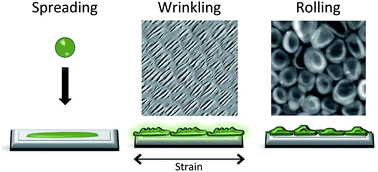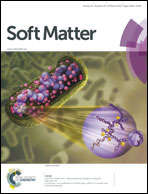Ultrasoft, highly deformable microgels
Abstract
Microgels are colloidally stable, hydrogel microparticles that have previously been used in a range of (soft) material applications due to their tunable mechanical and chemical properties. Most commonly, thermo and pH-responsive poly(N-isopropylacrylamide) (pNIPAm) microgels can be fabricated by precipitation polymerization in the presence of the co-monomer acrylic acid (AAc). Traditionally pNIPAm microgels are synthesized in the presence of a crosslinking agent, such as N,N′-methylenebisacrylamide (BIS), however, microgels can also be synthesized under ‘crosslinker free’ conditions. The resulting particles have extremely low (<0.5%), core-localized crosslinking resulting from rare chain transfer reactions. AFM nanoindentation of these ultralow crosslinked (ULC) particles indicate that they are soft relative to crosslinked microgels, with a Young's modulus of ∼10 kPa. Furthermore, ULC microgels are highly deformable as indicated by a high degree of spreading on glass surfaces and the ability to translocate through nanopores significantly smaller than the hydrodynamic diameter of the particles. The size and charge of ULCs can be easily modulated by altering reaction conditions, such as temperature, monomer, surfactant and initiator concentrations, and through the addition of co-monomers. Microgels based on the widely utilized, biocompatible polymer polyethylene glycol (PEG) can also be synthesized under crosslinker free conditions. Due to their softness and deformability, ULC microgels are a unique base material for a wide variety of biomedical applications including biomaterials for drug delivery and regenerative medicine.



 Please wait while we load your content...
Please wait while we load your content...